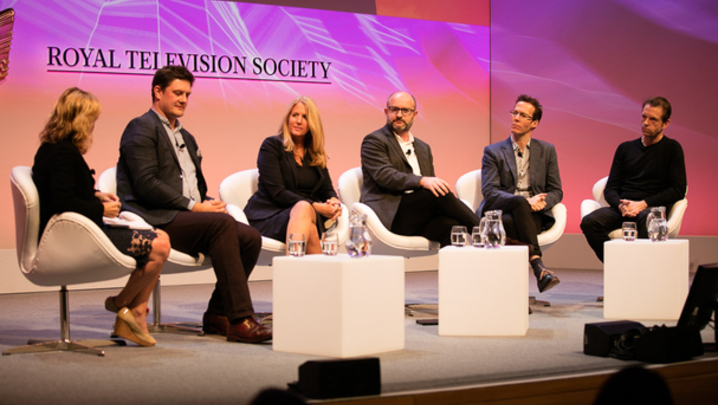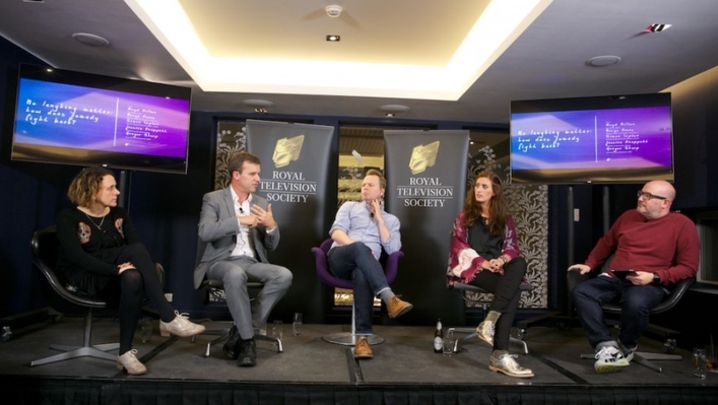As Vice launches its first UK TV channel, Stuart Kemp investigates why having a strong identity is more important than ever
The youthfully cool Vice Media, famous for its guerrilla-style coverage of war zones and drug busts, has built its brand online. Yet it is about to launch a traditional TV channel in the UK and plans to make it available in 44 countries via different partnerships.
It’s almost as if Apple had suddenly unveiled a record deck minus any kind of connectivity. Or is it?
Vice – reportedly a $4bn business – is to roll out a 24-hour linear TV channel, programmed, developed and produced entirely in-house by the company’s creative team. Named Viceland TV, it will arrive in September in the UK via a non-exclusive carriage deal with Sky. It also plans launches in Russia and France (with pay-TV operator Canal+) later this year.
In today’s complex world of content consumption, where it is not always easy to identify whether channel brands or content brands are king, Vice’s move suggests that there is still a lot to be gained from operating a channel, even when your intended audience are digital natives.
As a content studio producing huge quantities of premium video and original programming for a host of partners, Vice has already established itself as a non-linear, multi-platform brand.
With about 40% of all UK households subscribing to Sky, the highly sought after 18- to 35-year-old audiences, who might normally catch Vice on a night bus via their mobile phone or via the YouTube channel on a tablet, will be invited to tune in on television.
“Vice is a non-linear operator going to a linear-TV brand with a high awareness,” says Adrian Wills, general manager for Drama, Yesterday and Alibi at UKTV, the channel provider owned by BBC Worldwide and Scripps. “When we launch a new channel, we always start with the content first. We think of the product first and [then] how we make the [channel] brand fit with it.”
We think of the product first and [then] how we make the [channel] brand fit with it
Viceland is available in the US and Canada as a channel on A+E Networks. It boasts content such as: Gaycation, with Ellen Page and Ian Daniel; Huang’s World, with Eddie Huang; F*ck, That’s Delicious, with Action Bronson; and Balls Deep, with Thomas Morton. It also has Vice on HBO, a weekly news magazine show now in its fourth season.
While Vice Media is keeping its cards close to its chest ahead of September’s launch, it is understood that its UK channel will mix its US shows with newly minted content aimed at British audiences made in the same vein as the videos available online.
An example of the flavour of what’s to come is the documentary UK’s Scariest Debt Collector, featuring a British former gangster who runs a gym and debt collection business in Warrington. Available via the online strand Rule Britannia, it has scared more than 15 million viewers to date on YouTube.
Vice Media chief Shane Smith, the potty-mouthed founder and energetic driving force behind Vice, describes the TV channel as the banner’s “biggest move yet in our long love affair with our British and Irish audience”.
The deal with Sky gives Vice a swing at an audience that, hopefully, will be lured by the brand’s reputation. There is also a tilt at generating cash from the lucrative UK television advertising market.
Sky’s sales force, which enjoys an enviably steely reputation, is looking to boost Vice coffers – and its own – by selling Viceland’s airtime. Vice could also receive a per-Sky-subscriber carriage fee for its channel, although the details of the deal remain under wraps. In return, Sky will get exclusive rights to some Viceland shows for its own on-demand services.
Where Vice might fall down is the EPG page number it appears on. Too far down the list and casual engagement grows ever more unlikely.
“The holy grail for any channel is to get the people surfing through the list to start watching often enough to begin to recognise the channel and then for them to remember and go by default to see what’s on,” says one industry analyst.
Rivals will be watching to see how Viceland performs in the ultra-competitive British TV sector, where channels remain central to how content is accessed.
Significantly, this year saw BBC Three closed and relaunched as an online-only service. Across town, Channel 4 and Global Series Network partnered to launch Walter Presents,
a branded, ad-supported online and on-demand free service.
But how does a channel brand generate loyalty among a promiscuous and fickle audience of channel-hoppers in a multichannel, on-demand age? Collective industry wisdom suggests that pushing a brand with unsuitable content is a recipe for failure.
Viceland seems like a no brainer for Smith
Wills says candidly: “We’ve made mistakes in the past at UKTV, where we’ve come up with content and wrapped a brand around it that doesn’t quite fit.”
When UKTV decided to brand every channel in its portfolio as a standalone brand, it renamed UKTV People Blighty. It staggered on for years before the axe fell. There was simply not enough content to live up to the channel brand’s promise of celebrating being British and all the quirks and foibles that this encompasses.
“The brand was more exciting than the content, so there was a bit of a misalignment there,” Wills admits.
Steve North, fellow UKTV general manager for Dave, Gold and W (UKTV rebranded Watch to W earlier this year), says that building a brand can create audience loyalty and trust – provided that the content is up to scratch.
“If you’ve given audiences great programming in the past they will believe that you’ll deliver great shows in the future. But you have to keep delivering great shows to keep that brand trust up and keep then coming back,” says North.
One of the most successful rebrands in recent times was the launch of Dave in late 2007, which North was responsible for. G2 was reborn as lad-friendly Dave and made available for the first time on Freeview. The shows, most notably Top Gear, and the scheduling remained the same, but the audience and awareness of the channel soared.
“Nothing had changed from a viewing standpoint apart from the brand,” notes North. He adds: “Everyone talks about the internet taking over and it being all about on-demand. All of those big players that have made themselves successful in the online environment, however, continue to move into linear television.
“Vice is another example of an on-demand, non-linear service moving into that linear world – because it is in very good health and not dying.”
The total UK television audience (defined by Barb as anyone aged four or over in a household with a TV) reached 58.7 million this spring, compared with 58 million a year earlier.
The TV advertising market also remains buoyant: revenue in the UK totalled £5.27bn in 2015, up 7.4% on 2014, according to Thinkbox, which represents UK commercial TV broadcasters. The figure represents all the money invested by advertisers in commercial TV across linear spots and sponsorship, broadcaster VoD, and product placement.
Viceland seems like a no brainer for Smith, and his modest ambition for Vice to become “the biggest fucking media company in the world” should naturally include television.
While insiders insist that Vice has no intention of becoming a TV company – that’s way too old school – it does intend to build audiences for programmes that embrace the company’s reputation for edgy, sassy, youth-friendly content.
Time will tell whether young people turn on in large enough numbers to the latest eye-widening move by the one-time punk-culture magazine publisher. Certainly, having such a coveted brand ought to give Vice a leg up in the evolving landscape of TV channels.





